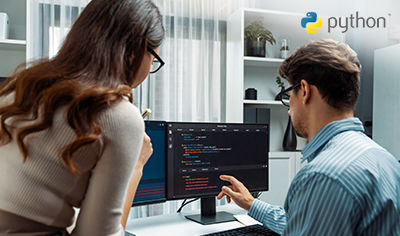PHP has become a coveted choice for building dynamic websites, web applications, customer relationship management systems, desktop (GUI) applications, and other web development solutions. This server-side scripting language has brought a paradigm shift in the realm of web development and is widely used by nearly 80% of websites including globally renowned brands on the internet such as Facebook, Etsy, Wikipedia, Canva, MailChimp, and to name a few. In other words, 8 out of 10 websites are using this general-purpose programming language in some way or other. However, like many other open-source technologies, PHP is not immune to vulnerabilities and has security flaws, which makes it an attractive target for intruders and cybercriminals who are prowling to exploit vulnerabilities and gain access to steal critical business data.

Let’s dive deep into the common PHP vulnerabilities and discover how to fix these security issues before they are exploited by hackers or cybercriminals.
1. Cross-site Scripting (XSS) Attack
Cross-site Scripting (XSS) is one of the common types of security vulnerabilities that occur when an attacker injects malicious scripts into web pages in the form of JavaScript, HTML, or other web-based languages to steal passwords and user cookies or gain administrative-level access. When a user visits the webpage that is injected with the code, the malicious script can execute automatically and potentially distribute malware, manipulate user sessions, steal sensitive information, or hijack the user’s session. Cross-site Scripting (XSS) attacks are particularly dangerous since they can easily bypass authentication controls, enabling a hacker to gain administrative-level access without requiring a valid login.
Web development solutions written in the PHP programming language are commonly targeted by hackers for cross-site scripting XSS attacks, therefore, it becomes critical to ensure input sanitization and validation techniques are properly implemented to prevent PHP-based web solutions from this type of vulnerability.
Protection Measures to Fix Cross-site Scripting (XSS) Attack
- Validate and sanitize user inputs on both the client and server sides to remove or encode potentially harmful characters.
- Set the “HttpOnly” flag on cookies to prevent them from being accessed via JavaScript, reducing the risk of session hijacking.
- Utilize PHP web development frameworks that offer built-in protection mechanisms against cross-site scripting (XSS) attacks.
- Conduct regular vulnerability assessments and security audits to identify and fix XSS vulnerabilities.
- Keep all software and third-party libraries up-to-date with the latest security patches to ensure they are free from potential security vulnerabilities.
Hire Dedicated PHP Developers Right the First Time
2. Cross-site Request Forgery (CSRF)
Cross-site Request Forgery (CSRF) is another common security vulnerability that occurs when a hacker tricks a user into executing an unauthorized or unintended request on a website or a web application where the user is authenticated. This attack is done by leveraging social engineering techniques, such as embedding malicious code or a crafted URL in a website, email, or other online content that the victim accesses. In cross-site request forgery, hackers exploit the trust relationship to execute unintended actions on users’ behalf without their consent. If a cross-site request forgery attacks normal users, it can force them to execute actions that change the application state, such as changing email addresses, transferring funds, or deleting sensitive data. Whereas, if a hacker attacks an administrative account, it can compromise the whole website or web application.
Protection Measures to Fix Cross-site Request Forgery (CSRF)
- Implement session timeouts to limit the time during which a session is valid. If the session expires after some time, it will reduce the risk of attacks.
- Leverage PHP web development frameworks that come with built-in protection mechanisms. Many web development frameworks offer tools and libraries to mitigate CSRF vulnerabilities.
- Implement anti-CSRF tokens in websites and web applications since these tokens are unique to each user session. The server validates the token to ensure that it originated from the authentic user.
- Set the SameSite attribute for cookies to “Strict” ensures that cookies are sent only in a first-party context, providing additional security protection against cross-site request forgery.
- To ensure that the request is legitimate, consider requiring reauthentication for sensitive actions. This adds an extra layer of protection against such attacks.
3. Session Hijacking
Session hijacking occurs when a hacker intercepts or steals the user’s session ID, enabling them to impersonate the legitimate user. This can lead to unauthorized access to the victim’s account, sensitive information, or actions on the web application.
Protection Measures to Fix Session Hijacking
- Employ robust communication channels by implementing HTTPS (SSL/TLS) to encrypt data transmission between the web server and the user’s browser. This prevents attackers from intercepting sensitive information, including session identifiers.
- Enforce a session timeout to automatically log out users after a specified period of inactivity. This mitigates the risk of session hijacking if a user leaves their session unattended.
- Encrypt session data, especially sensitive information, before storing it on the server. This adds a layer of security against hackers attempting to gain access to session information.
- Use token-based authentication mechanisms instead of relying solely on session identifiers. Tokens can be designed to be more secure and can be easily invalidated if necessary.
- Conduct regular security audits, including vulnerability assessments and penetration testing to identify and address potential weaknesses.
4. File Upload Vulnerabilities
File upload vulnerabilities are security risks associated with web applications written in PHP. Attackers can exploit these vulnerabilities to upload malicious files, such as scripts or malware which can lead to various security risks, including unauthorized access denial of service, and remote code execution.
Protection Measures to Fix File Upload Vulnerabilities
- Enforce size limitations on file upload to prevent users from uploading files that are excessively large and can exhaust server resources or impact application performance.
- Use anti-malware scanning tools to regularly scan uploaded files for malicious content. Reject files that are flagged as potential threats.
- Store uploaded files in a directory outside the web root to prevent direct access to uploaded files through a URL. This mitigates the risk of hackers executing or accessing the files directly.
- Implement exhaustive logging mechanisms to track file uploads and monitor for suspicious or abnormal activities.
Summing Up
PHP is a coveted choice among developers and enterprises alike for building web solutions, but it’s critical to address common vulnerabilities associated with this server-side scripting language to strengthen the security of web solutions. Following the best practices, you can mitigate the risks and secure PHP applications from attackers. In case, you still need assistance to overcome the vulnerabilities and security risks, you may consider seeking help from PHP development service providers.





